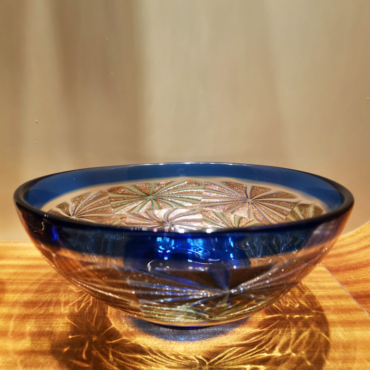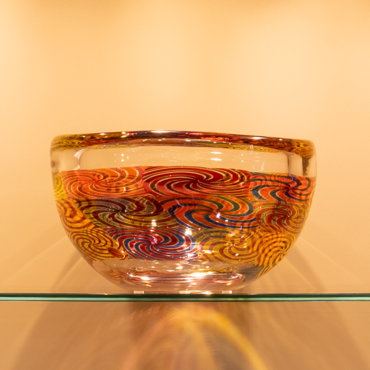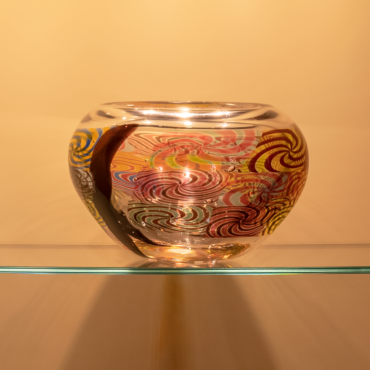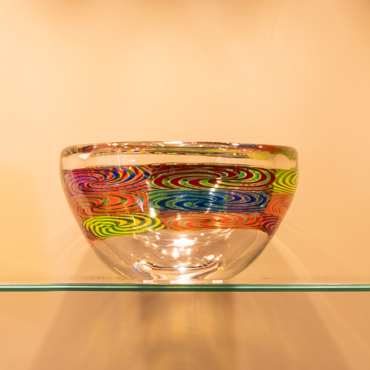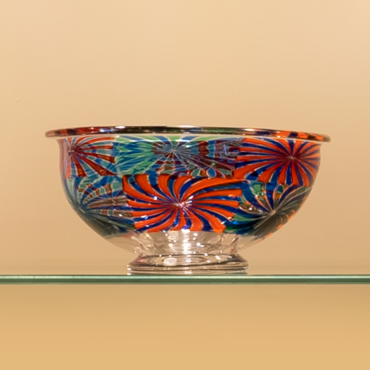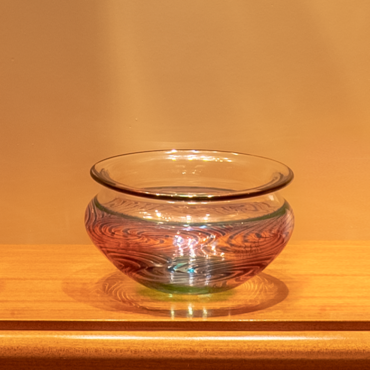The master glassmaker Archimede Seguso
The technical ability of Archimede Seguso as a master glass maker, combined with the genius of the designer, is recognized internationally. The 1950s represent years of research and innovation for him.
Among his inventions, the “lace” glass (1952) and the “feathers” glass (1956), which he develops by rediscovering the 18th-century filigree technique. ” Lace” glass artworks of incredible beauyt are preserved in the most important museums around the world. [For the detailed list of the museums hosting artworks by Archimede Seguso, we invite you to visit our website].
Few years before began the collaboration with Tiffany & Co, historic American brand, that continues until today. From the dialogue between Master Seguso and the various creative directors who followed one another at Tiffany & Co, iconic collections are born, the prototypes of which are preserved in the archives of the Glass Factory.
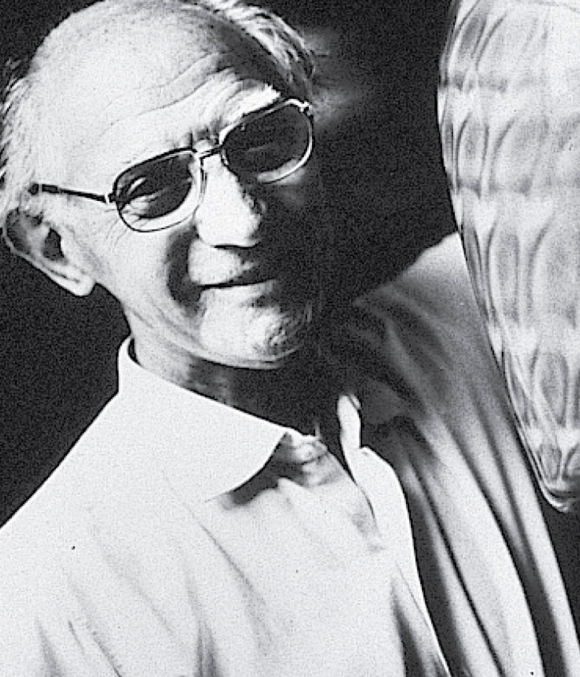
Archimede also collaborates with other artists and designers on the Italian and international scene: in 1952, with Giuseppe Santomaso, he elaborates a series of brightly colored handles for the doors of TELVE telephone booths, a prelude to the work of the large panel designed and built for the Cortina d’Ampezzo Ice Stadium on the occasion of the 1956 Winter Olympics; based on a design by Luigi Rincicotti, he creates ‘Il Gioco’, a sculpture exhibited at the 1967 Venice Biennale.
The Sixties continue to give impressive glass works, today point of contention among collectors. We remember the “Continuous Threads” (1962), the “Aleanti” (1964) , the “Superimposed colors and stripes ” (1966), the “Starry filigree” and the “Onions” (1968), all collections exhibited at the Venice Biennials.
Archimede, however, does not leave the ancient love for solid sculpture: he creates works such as “Head of a sleeping woman” (1971), connected to the high relief of “Sleeping Woman seated on a stool” (1951), “The Sprout” and “Double eclipse “(1986),” Head of Child “(1972) and “Head of women with hair in the wind”.
In 1982 he takes part in the exhibition of the 1000 year celebration of glass art in Venice at Palazzo Grassi and at the Correr Museum, with several sculptures and with the “Deposed Christ”: the artwork, housed in the Museum of the Basilica of San Marco in Venice until 2019, is now on display in the Museum of the Archimede Seguso Glass Factory in Murano, Fondamenta Serenella 18.
In 1989, to celebrate his 80th birthday, the Organization Save Venice and Tiffany&Co, honor him with a solo exhibition in New York entitled “The Master of Masters” at the boutique Tiffany & Co on the 5th Ave.
In 1990 another solo exhibition was presented at the Otaru Museum in Japan and in 1991, in Venice, the Municipality of Venice hosted “I Vetri di Archimede Seguso”, unique case in which the works of a living artist were exhibited in the Doge’s Palace. The exhibition has an unimaginable success and its opening is extended twice.
Sensitive to contingent facts, in 1992 he created “My Europe”, an obelisk in blown blue glass over two meters high which was exhibited in Luxembourg and in Liège, and that is housed today in the Archimede Seguso Artistic Glass Factory.
In the same year he created the “Dimanche Matin” collection, that has been chosen to inaugurate the Archimede Seguso Gallery in Venice, in Calle Caotorta San Marco 3562 [open map].
In the last years of life, Archimede’s inspiration gains new strength from researches on the use of color, such as the vases “Riflessi e Intarsi” (1990) and the “Carnevale” (1987/1989), but above all we love to remember the Collection “La Fenice “(1996), made of unique pieces different from each other in shape and color, through which Master Seguso describes the tragic event of the fire of the Venetian theater, that he experienced at a distance of 10 meters away from the blaze with the terror that the fire would reach his house. The story is also written by the internationally renowned American author John Berendt in the book ”The City of Falling Angels”, translated into more than 50 languages, where the writer narrates the period he spent in Venice to investigate the fact. Among the figures of the Venetian panorama, the character of Archimede Seguso stands out: we find him at the opening and closing of the book, in whose chapters the description of his family events is also intertwined. The portrait that emerges of Archimede is totally positive and arouses in the reader the affection for the “Master of Masters”, the innovative genius of XXth century Murano glass.
The experience of the master Archimede
Lorem ipsum dolor sit amet, consectetur adipiscing elit, sed do eiusmod tempor incididunt ut labore et dolore magna aliqua. Ut enim ad minim veniam, quis nostrud exercitation ullamco laboris nisi ut aliquip ex ea commodo consequat.

